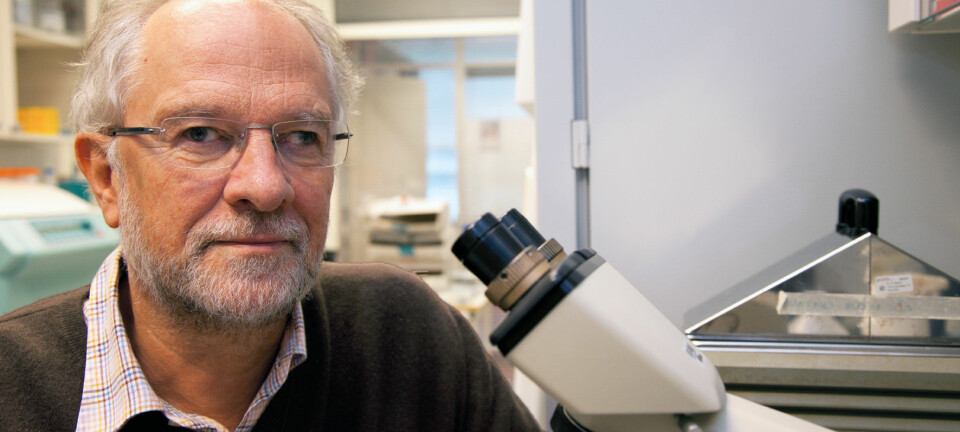
New vaccine could eradicate tuberculosis
Tuberculosis has hit one in three persons in the world. Researchers have now created an effective vaccine against this deadly and highly infectious disease.
You cough up blood and your lungs are inflamed. Tuberculosis (TB) is a nasty disease which kills three million people a years.
But now Danish researchers have come up with a vaccine against this dreaded disease. The vaccine has proved highly effective in test animals – and is currently being tested on humans in South Africa.
“This is a really good tool, which can help the next generation get rid of tuberculosis,” says Professor Peter Lawætz Andersen, the vice president of Vaccine Research and Development at the Danish State Serum Institute (SSI).
He hopes the new vaccine will push the number of newly-infected people so far down that it becomes economically feasible for poor countries to provide medical treatment for those who are infected.
“Today it’s not feasible when 70 percent of a population is infected. If we can manage to get this figure down to 5-10 percent, it’s a completely different matter,” he says.
Tuberculosis latent until it strikes
Around a third of Earth’s population carries this dreaded disease – but fortunately in a latent state.
Dangerous outbreaks of the tuberculosis bacterium – Mycobacterium tuberculosis (MTB) – only occur in one in ten infected people.
MTB normally lies dormant in the lungs, where it hides until the infected person’s immune system is sufficiently weakened for the bacterium to strike.
The disease typically breaks out because the host is malnourished, and then it’s easy to infect others through coughing.
As long as TB is prevented from breaking out, it is not infectious – and the carrier does not notice its presence.
The new vaccine – known as H56 – ensures that MTB never breaks out.
Completely new way of vaccinating
Other researchers have previously created vaccines against TB, but according to Andersen, these vaccines haven’t been very effective.
“Roughly speaking, the bacterium develops into a completely different bacterium once it’s made its way inside the body. The early vaccines were directed at the bacterium as it appears in the first phase – just when it enters the host’s body,” he says.
“We have directed our vaccine at the late phase of the bacterium’s life cycle, so that the vaccine ensures that the bacterium cannot change and develop into a chronic disease. This has proved a much more effective method.”
Even though a person is vaccinated with H56, it’s still possible to be infected with TB. But the vaccine prevents the bacterium from changing its shape and developing into its pathogenic version.
The vaccine also reduces the risk of infection, since the bacterium is only infectious once the disease breaks out.
Fifteen years of research led to H56
A long research process was required to find the right vaccine:
- Fifteen years ago they started studying how MTB behaves in infected mice. This led to the H1 vaccine.
- Since the animal trials showed that H1 was unable to combat chronic disease, the researchers started looking at other options. It wasn’t until they reached H56 that they started seeing real results.
- H56 was first tested on mice, then guinea pigs and finally on monkeys.
It turned out – quite sensationally – that the vaccine protected monkeys both before and after they became infected with TB. The vaccine managed to keep the MTB in check in monkeys who already had the bacterium in their bodies.
Tested on South Africans
Although the new vaccine looks very promising, it’s probably not a good idea to get too excited, says Andersen’s colleague, Professor Jens Lundgren, an expert in viral diseases at the Department of International Health, Immunology and Microbiology at the University of Copenhagen.
“It looks very impressive,” says Lundgren. “But it remains to be tested on humans. I have personal experience with developing a HIV-vaccine, which looked very promising on animals, but which didn’t have any effect on humans.”
Peter Lawætz Andersen and his colleagues are currently testing the vaccine on the people they’re primarily designed to help – people in the Third World.
“In November we started our human trials in Cape Town in South Africa. If these trials are as successful as in the animal models, we have every reason to be optimistic,” says Andersen.
The vaccine won’t gain approval until 2020
In 2015-16, the researchers will start analysing the results from the human trials. But regardless of how positive the results may turn out to be, the H56 vaccine will need to undergo further tests before it will gain approval. This is unlikely to happen before 2020.
The reason for this is that unlike other diseases, TB develops so slowly that it takes years of monitoring to ascertain that it really has been sidelined.
--------------------------------------
Read this article in Danish at videnskab.dk
Translated by: Dann Vinther
Scientific links
- Aagaard, Claus et al, A multistage tuberculosis vaccine that confers efficient protection before and after exposure, Nature Medicine 17, 189–194 (2011), doi:10.1038/nm.2285
- Ling Lin, Philana et al, The multistage vaccine H56 boosts the effects of BCG to protect cynomolgus macaques against active tuberculosis and reactivation of latent Mycobacterium tuberculosis infection, J Clin Invest. 2012;122(1):303–314, doi:10.1172/JCI46











